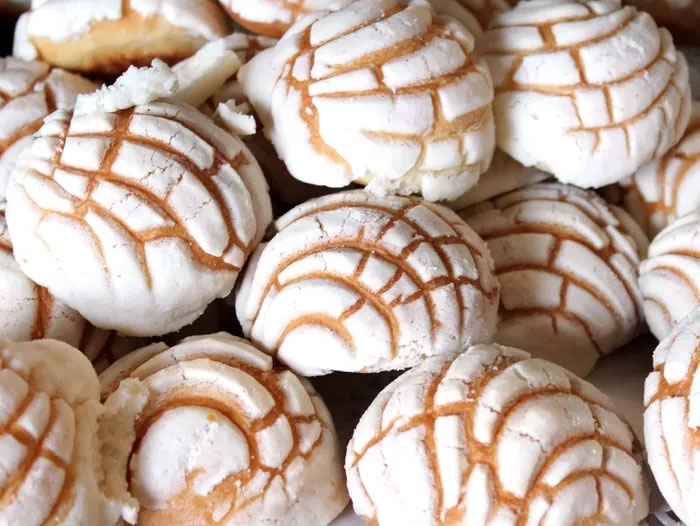Conchas, Mexico’s Genius Cookie-Topped Breads, Are Finally Getting Their Due
July 2, 2019 | 2 min to read

Some people dip and soak them in hot chocolate at breakfast. Others eat them with sour cream and black beans. For anyone like myself that has been eating conchas, the crusty, cookie-swirl topped Mexican sweet bread, since they were a kid, the pan dulce (or sweet bread) was just a part of daily life. The same way most people think of ripping open a pack of Lil’ Debbies treats from the grocery store. Or picking up bread from their neighborhood bakery.
Conchas (which means “shells” in Spanish, as the twisted streusel top looks like a seashell) are Mexico’s national sweet bread. The yeasted bread roll, which often comes in flavors like vanilla or chocolate, are made from an eggy, fatty biscocho dough. The history of the conchadates back to the 18th century during the colonial era, when French, Spanish, and Italian bakers established themselves in Mexico or New Spain, bringing their recipes, like brioche and baguettes, with them. Pan dulce was developed by the creativity and work of nuns, indigenous women, and criollas using the ingredients they had on hand. In some small towns, the cookie-topped crusts are still made with pork lard instead of modern day butter. In the United States, until a few years ago, conchas weren’t anything fancy and generally of poor quality, relatively unknown outside of Mexican and Hispanic communities or those living along the Mexican border. But that is starting to change.
To read the rest of the story, please go to: Thrillist
